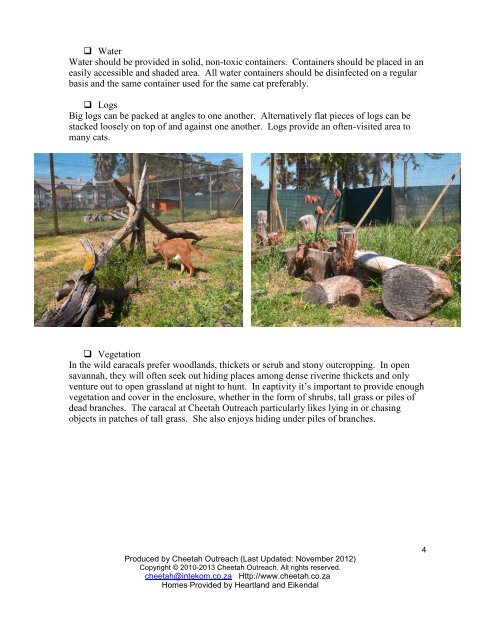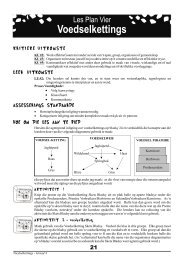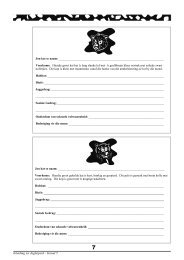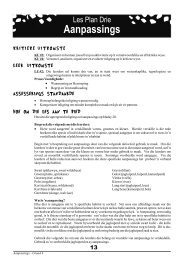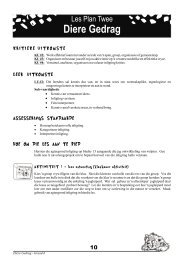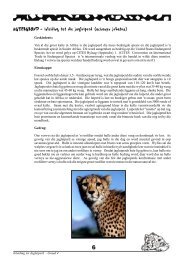Enrichment Suggestions for Captive-born, Hand-reared Caracal ...
Enrichment Suggestions for Captive-born, Hand-reared Caracal ...
Enrichment Suggestions for Captive-born, Hand-reared Caracal ...
You also want an ePaper? Increase the reach of your titles
YUMPU automatically turns print PDFs into web optimized ePapers that Google loves.
Water<br />
Water should be provided in solid, non-toxic containers. Containers should be placed in an<br />
easily accessible and shaded area. All water containers should be disinfected on a regular<br />
basis and the same container used <strong>for</strong> the same cat preferably.<br />
Logs<br />
Big logs can be packed at angles to one another. Alternatively flat pieces of logs can be<br />
stacked loosely on top of and against one another. Logs provide an often-visited area to<br />
many cats.<br />
Vegetation<br />
In the wild caracals prefer woodlands, thickets or scrub and stony outcropping. In open<br />
savannah, they will often seek out hiding places among dense riverine thickets and only<br />
venture out to open grassland at night to hunt. In captivity it’s important to provide enough<br />
vegetation and cover in the enclosure, whether in the <strong>for</strong>m of shrubs, tall grass or piles of<br />
dead branches. The caracal at Cheetah Outreach particularly likes lying in or chasing<br />
objects in patches of tall grass. She also enjoys hiding under piles of branches.<br />
Produced by Cheetah Outreach (Last Updated: November 2012)<br />
Copyright © 2010-2013 Cheetah Outreach. All rights reserved.<br />
cheetah@intekom.co.za Http://www.cheetah.co.za<br />
Homes Provided by Heartland and Eikendal<br />
4


